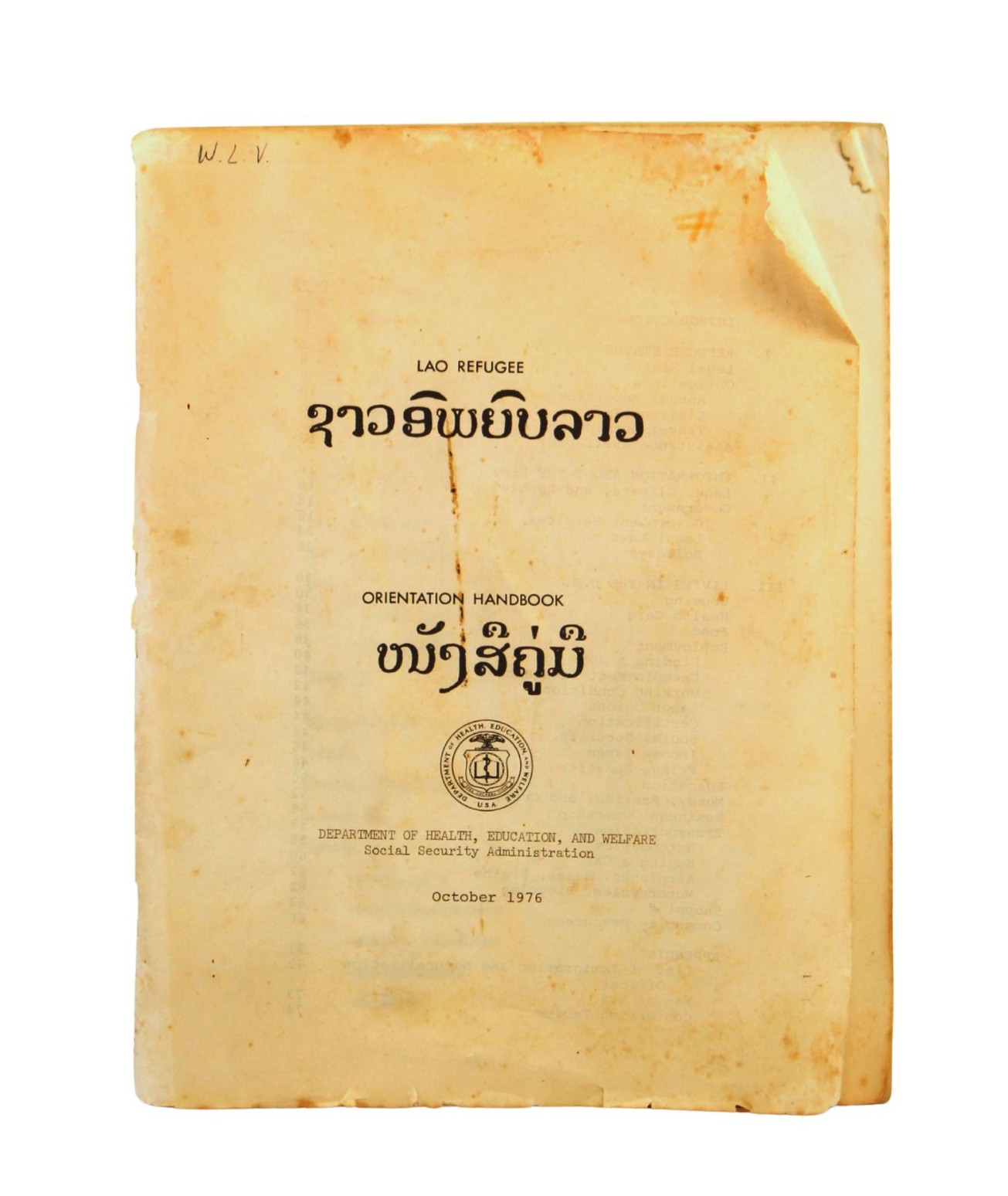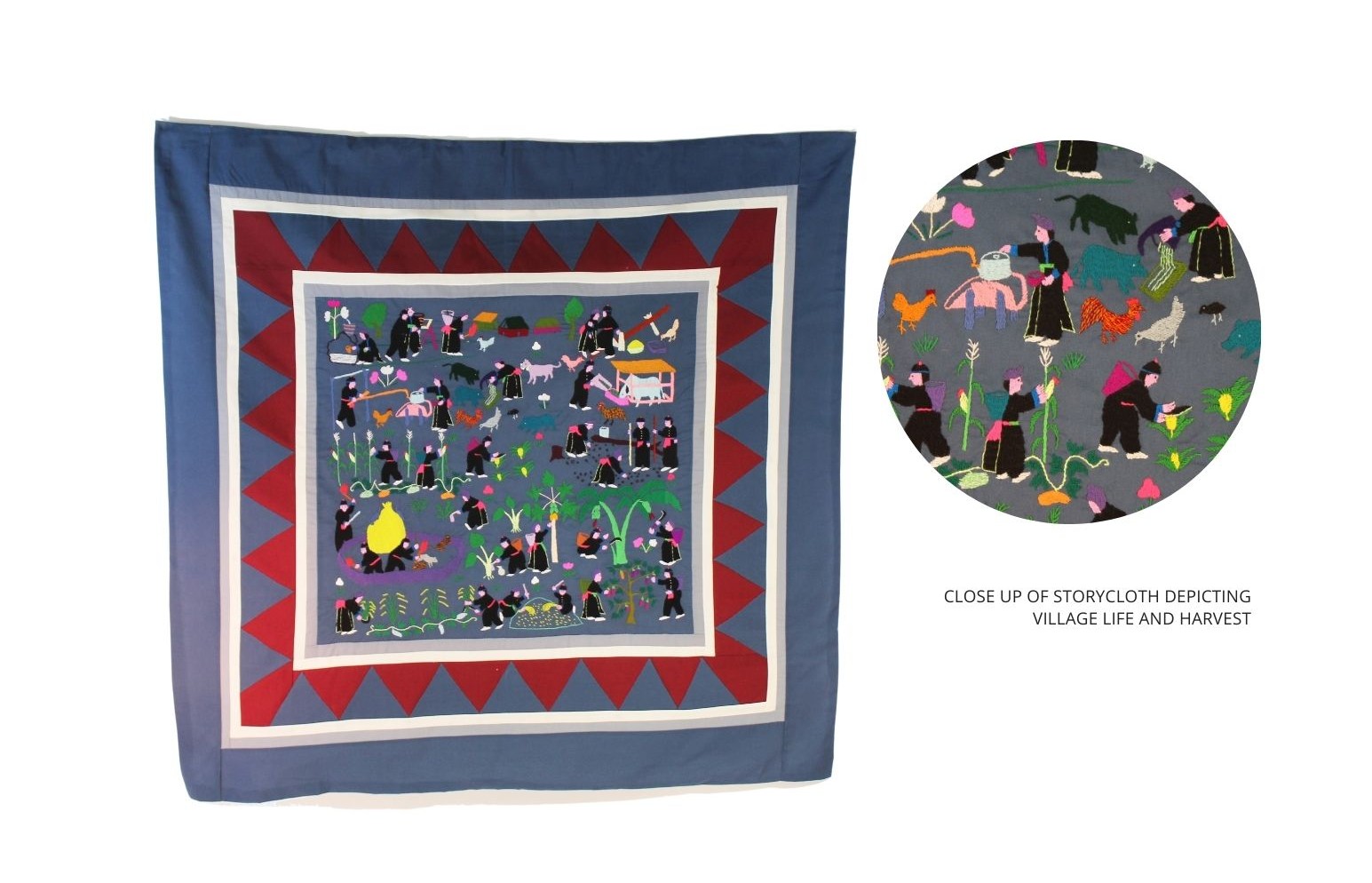In Our Collection – Lao Refugee Orientation Handbook and Hmong Embroidery, Paj ntaub, Story Cloth
- Year
- 2025
- Volume
- 60
- Issue
- Number 1, Spring 2025
- Creators
- Youa Vang

Acquired: 2024
RCHS Collection: 2025.7
In Our Collection shares the pieces acquired by Ramsey County Historical Society.
The collection contains tens of thousands of pieces, including archives, books, objects, and photographs, which are maintained by Director of Collections and Exhibitions, Mollie Spillman, in downtown St. Paul.
Lao Refugee Orientation Book
Each Hmong family received a Lao Refugee orientation book when they left Laos by way of Thailand to help integrate into American culture.
Written in Lao and English, the book provided legal advice on how to report to the Immigration and Naturalization Service (INS) along with information on the land, climate, and people of the United States. It also shared information about housing, shopping for groceries and basic necessity items, job seeking, and community resources in the late ‘70s.
The initials on the book are in the handwriting of the donor’s father, Walor Vang; Hmong men take on an elder name in older age. Walor, originally Yeng, took his name earlier because he was in hiding from the Laotian government after the Vietnam War, having fought for the U.S. in the Secret War.

Acquired: 2021
RCHS Collection: 2021.53
Hmong Embroidery, Paj Ntaub, Story Cloth
Hmong embroidery, paj ntaub, has many uses: fashion statements–daily and during the Hmong New Year;, blankets and linens;, and storytelling. The story cloths are a way to pass on stories and tales of past generations, rendered in the form of needle and thread, and to depict the history of the Hmong people that may have been lost. It was only within the twentieth century that Hmong people gained access to education, so stories were mainly passed to the next generation either orally or through embroidery. The cloths can be read from bottom to top or in any direction, for they do not follow any certain pattern.
While many pieces may have similar elements, each piece is unique as they are created by hand. Each embroidery artist has their own technique that changes with colors used, the shapes created by a tiny snip of the scissor, and even how each thread is stretched. Depending on how fast an artist works, these pieces can take up to a year to create.
From the 1980s through the 2010s, the story cloths sold at markets in the United States were handmade and developed the tourist trade and created income for artists. This fed the entrepreneurial spirit, and by the late 2010s, access to machine embroidery became prevalent. In 2025, most story cloths pieces are rendered from machine embroidery for efficiency.
Photos by Youa Vang
- Year
- 2025
- Volume
- 60
- Issue
- Number 1, Spring 2025
- Creators
- Youa Vang